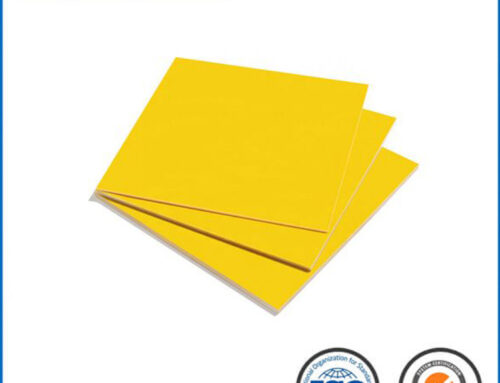In the realm of advanced materials, EPGC 202 takes center stage as an epoxy glass laminate renowned for its exceptional properties. This article delves into the intricacies of it, exploring its composition, manufacturing innovations, and the diverse applications where it proves to be a crucial component. From electrical engineering to industrial applications, it stands as a testament to the ongoing advancements in epoxy glass laminate technology.
1. Composition of EPGC 202: A Symphony of Epoxy and Glass
Epoxy Resin Matrix:
It is composed of layers of glass fabric impregnated with epoxy resin, forming a robust matrix.
The epoxy resin provides excellent adhesion, insulation, and resistance to environmental factors, contributing to the laminate’s durability.
Glass Fabric Reinforcement:
The layers of glass fabric act as reinforcement, imparting strength and dimensional stability to the laminate.
The combination of epoxy resin and glass fabric creates a material with a harmonious blend of mechanical and electrical properties.
2. Manufacturing Innovations: Precision in Every Layer
High-Pressure Lamination:
It is manufactured through a high-pressure lamination process, ensuring the uniform distribution of epoxy resin and glass fabric layers.
Precision in layering is a key factor, influencing the mechanical and electrical performance of the laminate.
Controlled Thickness:
The manufacturing process allows for controlled thickness of each layer, tailoring the laminate to meet specific application requirements.
This precision in thickness contributes to the versatility of EPGC 202 in various engineering applications.
3. Electrical Performance: Navigating the Insulating Excellence
High Dielectric Strength:
EPGC 202 boasts high dielectric strength, making it an excellent insulator in electrical applications.
This property is vital for maintaining insulation integrity in electronic components and systems.
Low Dissipation Factor:
The low dissipation factor of it ensures minimal loss of electrical energy, making it suitable for high-frequency applications.
This characteristic enhances the efficiency of electronic circuits.
4. Thermal Stability: Adapting to Temperature Challenges
Thermal Resistance:
EPGC 202 exhibits thermal resistance, ensuring stability under varying temperature conditions.
This property is crucial for applications where the laminate may experience fluctuations in thermal environments.
Coefficient of Thermal Expansion:
The controlled coefficient of thermal expansion in EPGC 202 contributes to its dimensional stability across temperature variations.
This stability is valuable in applications demanding precision and reliability.
5. Diverse Applications: From PCBs to Industrial Components
Printed Circuit Boards (PCBs):
EPGC 202 finds extensive use in the manufacturing of PCBs, serving as a substrate for electronic components.
Its electrical insulation properties and mechanical strength make it a preferred choice in PCB applications.
Industrial Components:
In industrial settings, EPGC 202 is employed for fabricating components that require a balance of electrical insulation and mechanical durability.
Its versatility makes it suitable for diverse industrial applications.
EPGC 202 – A Pioneer in Epoxy Glass Laminate Technology
As EPGC 202 is unveiled, its significance in the realm of epoxy glass laminates becomes evident. From composition to manufacturing innovations, electrical performance, thermal stability, and diverse applications, EPGC 202 stands as a pioneer in epoxy glass laminate technology. In an era where precision and reliability are paramount, EPGC 202 navigates the forefront of innovation, embodying the advancements that continue to shape the landscape of advanced materials in engineering.
More:




